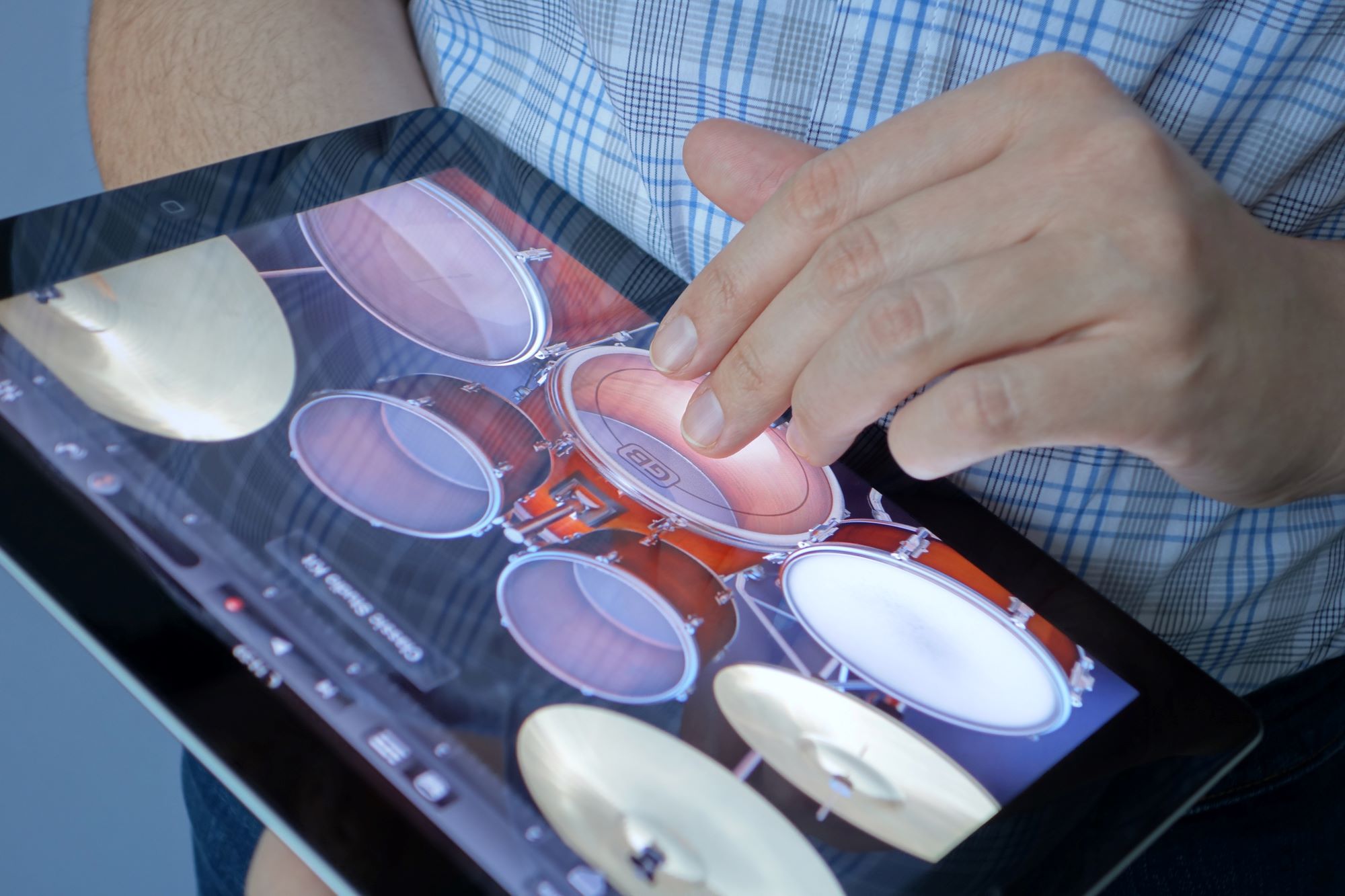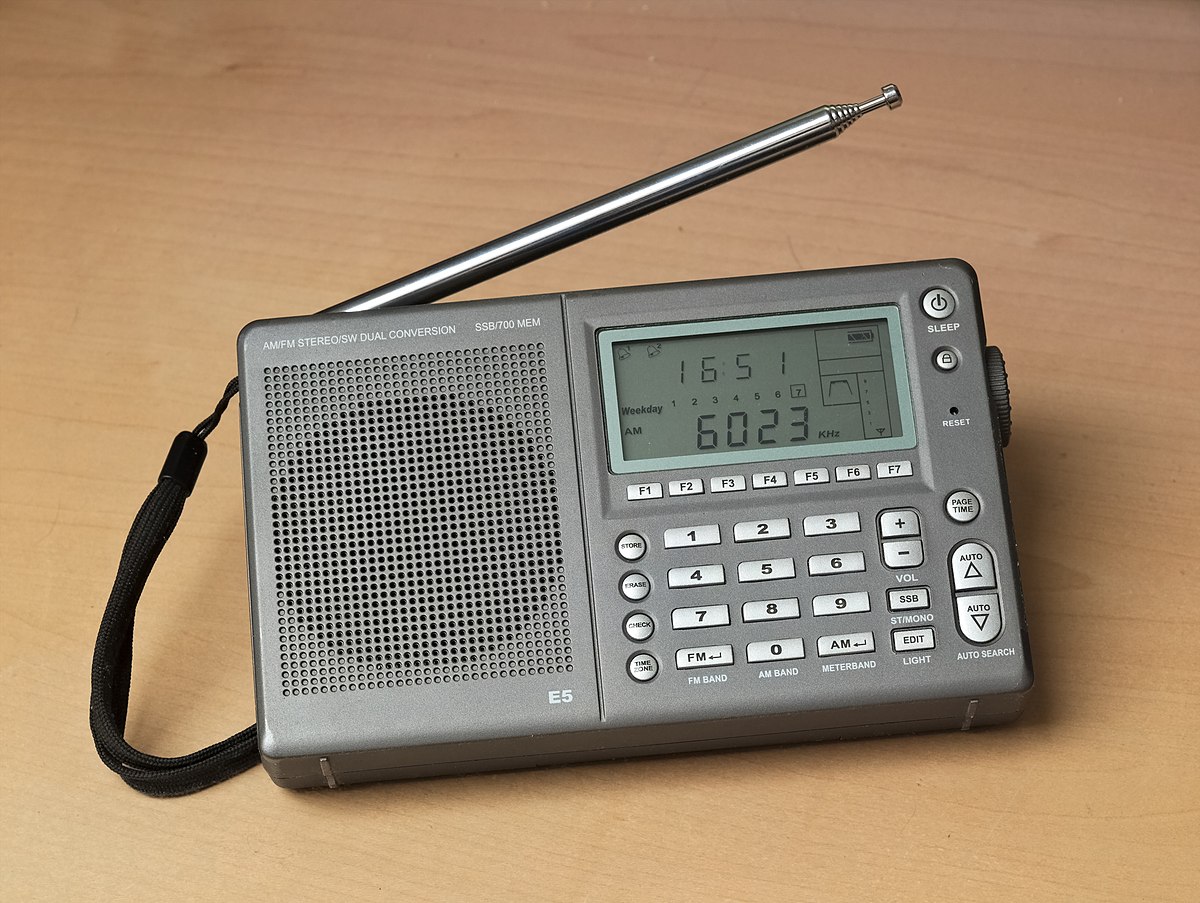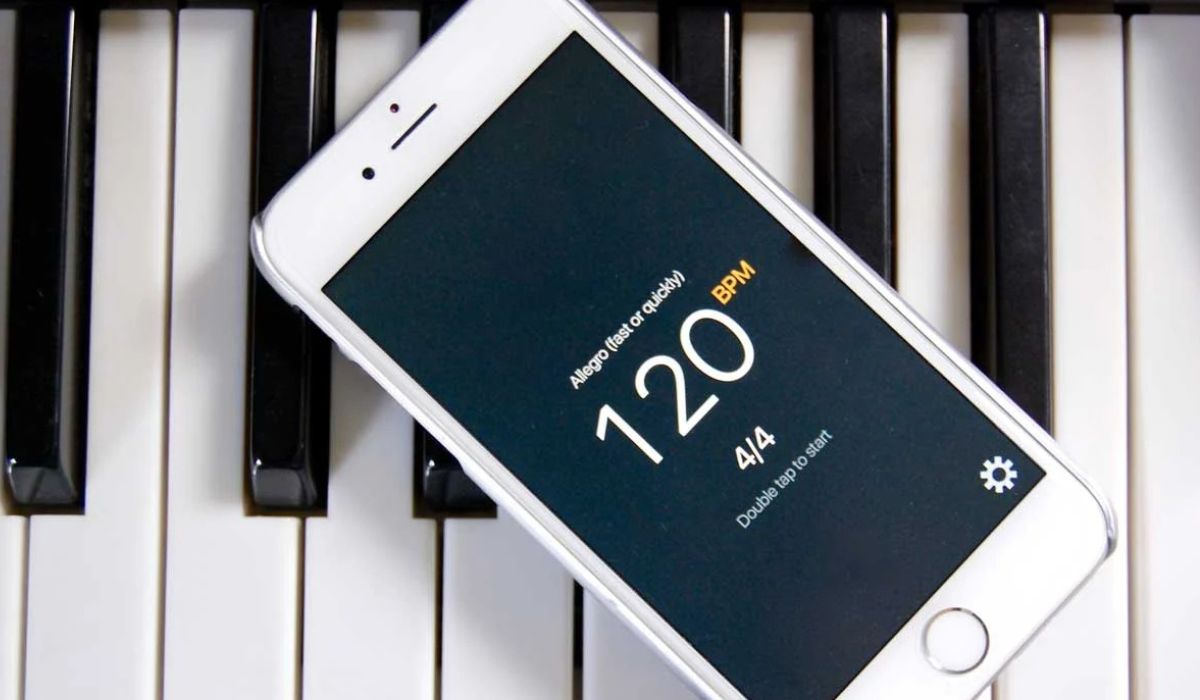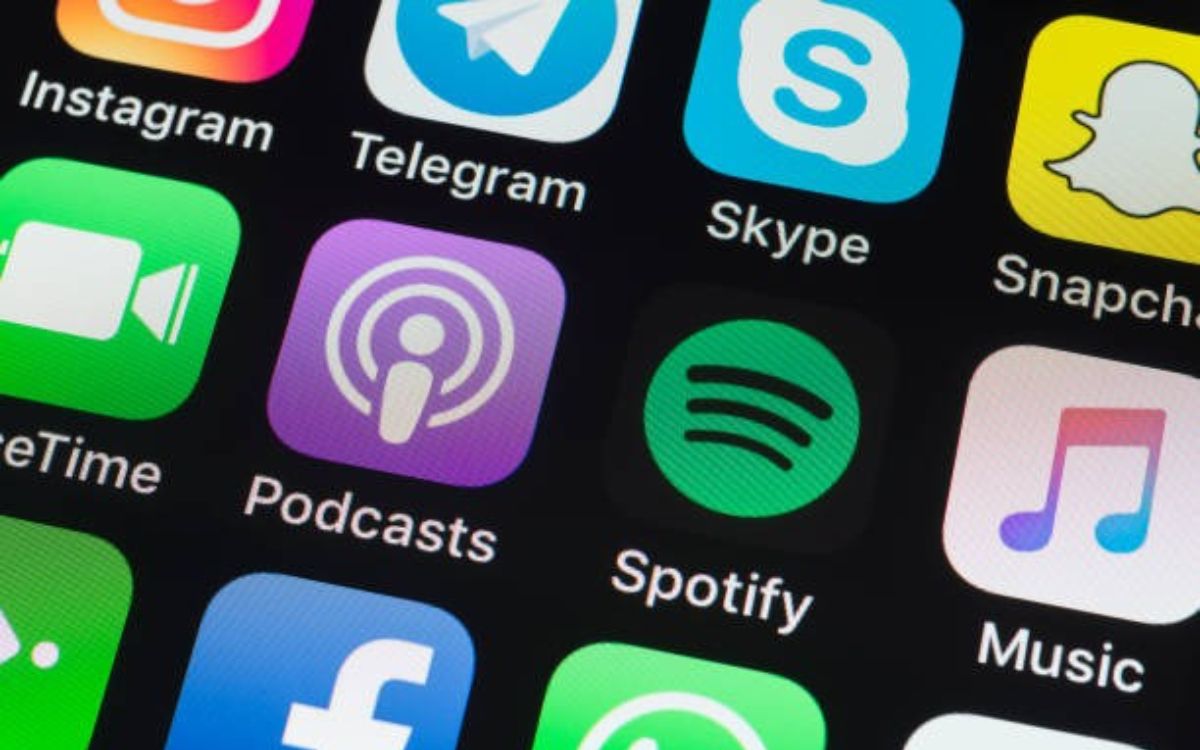Home>Devices & Equipment>Radio>What Radio App Uses The Least Data
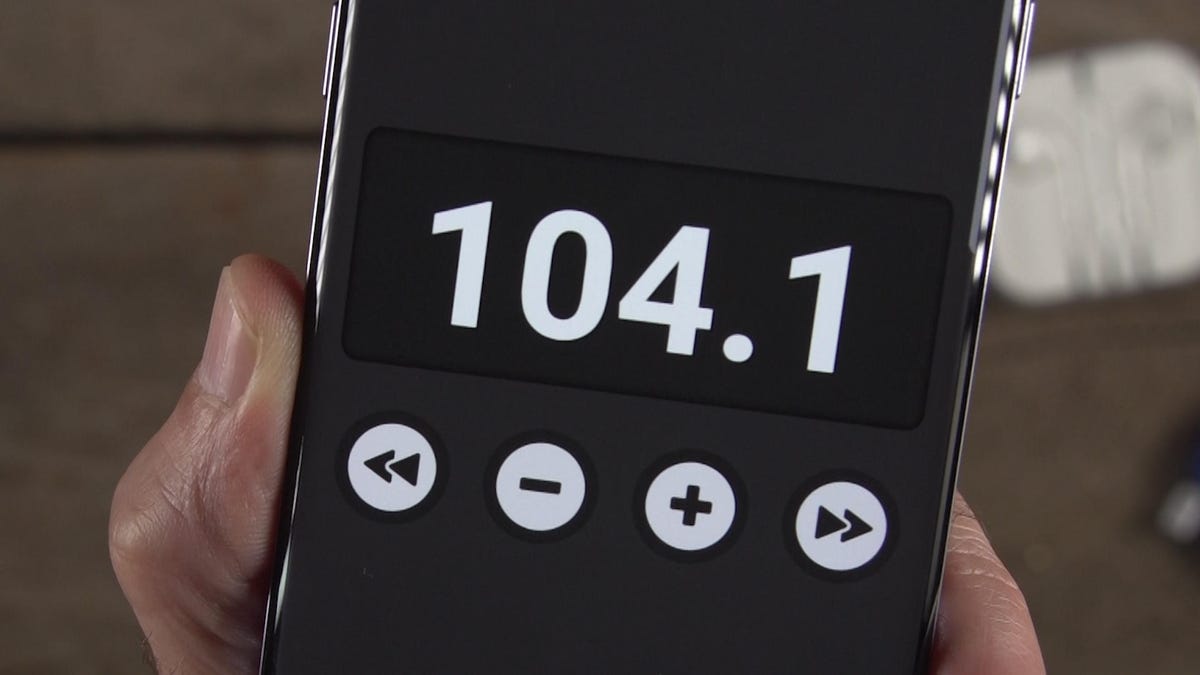

Radio
What Radio App Uses The Least Data
Modified: January 22, 2024
Discover a radio app that uses minimal data while enjoying your favorite stations. Save on data usage without compromising on listening experience.
(Many of the links in this article redirect to a specific reviewed product. Your purchase of these products through affiliate links helps to generate commission for AudioLover.com, at no extra cost. Learn more)
Table of Contents
Introduction
Welcome to the world of radio apps, where you can enjoy your favorite music, news, and talk shows on-the-go. With the rise of streaming services, radio apps have revolutionized the way we consume audio content. However, one concern for many users is the amount of data these apps consume, particularly for those with limited data plans or slow internet connections.
Data usage is an important factor to consider when choosing a radio app. Not only does excessive data usage lead to higher costs, but it can also result in slower loading times and buffering issues. Therefore, it’s essential to find a radio app that strikes the right balance between providing high-quality audio and minimizing data consumption.
In this article, we will explore the factors that contribute to data usage in radio apps and compare some popular options to find out which ones use the least amount of data. Whether you’re a music lover, podcast enthusiast, or a fan of talk shows, this article will help you make an informed decision and find the perfect radio app that fits your data needs.
Understanding data usage in radio apps
Data usage in radio apps refers to the amount of internet bandwidth consumed while streaming audio content. This data consumption can vary depending on several factors, including the audio quality, streaming bitrate, and the length of time spent listening to the app.
When you listen to a radio app, it streams audio content from the internet in real-time. The app downloads and plays the audio files continuously, which requires a constant data connection. The higher the audio quality and the streaming bitrate, the more data will be consumed.
Audio quality determines the clarity and fidelity of the audio playback. Higher-quality audio means more detailed and immersive sound, but it also requires more data to transmit. Most radio apps offer different quality options, allowing users to choose between high, medium, or low-quality audio. Selecting a lower quality setting can significantly reduce data usage.
The streaming bitrate measures the amount of data transmitted per second. Higher bitrates mean better audio quality but also result in more data usage. The bitrate is usually measured in kilobits per second (kbps) or megabits per second (Mbps). Choosing a lower streaming bitrate reduces the data consumption without sacrificing much audio quality.
The length of time spent listening to a radio app also affects data usage. The longer you listen, the more data will be consumed. If you frequently listen to radio apps for extended periods, it’s important to keep an eye on your data usage to avoid reaching your data limit.
It’s worth noting that data usage can vary slightly between different radio apps, even under the same settings. This is because each app may use different compression techniques or algorithms to optimize the streaming process. Additionally, some apps may have features like caching or pre-buffering, which can affect data consumption. Understanding these factors will help you manage your data usage effectively.
Factors affecting data usage in radio apps
Several factors contribute to the amount of data used by radio apps. Being aware of these factors can help you understand and control your data consumption. Here are some key factors that can affect data usage:
Audio quality:
The higher the audio quality selected in a radio app, the more data will be consumed. While higher quality audio provides a better listening experience, it also requires more bandwidth to stream.
Streaming bitrate:
The streaming bitrate is the amount of data transmitted per second while streaming audio. Higher bitrates result in better sound quality but also increase data usage. Choosing a lower streaming bitrate can reduce data consumption without compromising too much on audio quality.
Streaming time:
The duration of time spent listening to a radio app directly affects data usage. The longer you listen, the more data will be consumed. Monitoring your streaming time can help you manage your data usage effectively.
Background data usage:
Some radio apps continue to consume data even when they are running in the background or when your device is locked. This background data usage can contribute to higher overall data consumption. It’s important to check the settings of your radio app and disable any unnecessary background data usage.
Caching and pre-buffering:
Radio apps often employ techniques like caching and pre-buffering to enhance the listening experience. Caching temporarily stores audio data on your device, reducing the amount of data needed for subsequent playback. Pre-buffering loads a small portion of the audio in advance, reducing buffering interruptions. While these techniques optimize the user experience, they may increase initial data usage.
Connection speed:
The speed of your internet connection can influence data usage. If you have a faster connection, the app may stream at a higher bitrate, resulting in increased data consumption. Conversely, a slower connection may result in lower quality audio streams, reducing data usage.
Understanding these factors will help you make informed decisions when it comes to managing your data usage in radio apps. By adjusting the audio quality settings, monitoring your streaming time, and being mindful of background data usage, you can find a balance between enjoying your favorite audio content and conserving data.
Comparison of radio apps based on data usage
When it comes to data usage in radio apps, not all apps are created equal. Some apps are designed to optimize data consumption while still delivering high-quality audio. Here, we compare a few popular radio apps based on their data usage:
App A:
App A is known for its efficient data usage. It offers multiple audio quality options, allowing users to choose the level of data consumption they’re comfortable with. The app also utilizes advanced compression techniques to minimize the amount of data needed for streaming. Users report that App A consistently consumes less data compared to other radio apps, making it an excellent choice for those concerned about data usage.
App B:
App B is a widely-used radio app that provides a seamless streaming experience. While it offers high-quality audio, it tends to use slightly more data compared to App A. However, users appreciate the app’s intuitive interface and vast radio station selection. For users who prioritize audio quality and are willing to accept slightly higher data usage, App B remains a popular choice.
App C:
App C distinguishes itself by offering a unique feature that allows users to customize their streaming preferences based on their data plan. Users can set their desired data limit within the app, and it automatically adjusts the streaming bitrate to match the chosen limit. This smart data usage feature is highly appreciated by users with limited data plans, as it helps them stay within their allocated data allowance while still enjoying their favorite radio stations.
App D:
App D is designed specifically for users with low-speed internet connections or limited data plans. It employs advanced data-saving techniques like optimized compression and adaptive streaming to minimize data usage without compromising audio quality. Users have reported significant data savings when using App D, making it an ideal choice for those in areas with inconsistent internet access or strict data limitations.
These are just a few examples of radio apps that prioritize efficient data usage. While choosing a radio app with low data consumption is important, it’s essential to consider other factors like user experience, audio quality, and available features. Consider your specific needs and preferences to find the radio app that strikes the right balance between data usage and audio satisfaction.
Radio apps with the least data usage
When it comes to finding radio apps that consume the least amount of data, several options stand out. These apps prioritize efficient data usage while still delivering a high-quality audio experience. Here are a few radio apps known for their low data consumption:
App A:
App A is a popular choice for users looking to minimize data usage. It offers a range of audio quality options, allowing users to choose the level of data consumption they’re comfortable with. Additionally, App A utilizes advanced compression techniques to optimize streaming and reduce overall data usage. Users have reported significant data savings when using App A, making it a top choice for those concerned about data consumption.
App B:
App B prides itself on its data-saving capabilities, making it an excellent choice for users with limited data plans. It employs intelligent streaming algorithms that adapt to your internet connection and optimize data usage without compromising audio quality. App B also offers a low-data mode that further reduces data consumption without sacrificing the listening experience. Users have praised App B for its low data usage and smooth streaming performance.
App C:
App C caters to users who prioritize minimizing data consumption while still enjoying their favorite radio stations. It offers customizable streaming settings that allow users to fine-tune the data usage according to their preferences. With a range of streaming bitrate options and advanced caching techniques, App C ensures efficient data usage without compromising audio quality. Users appreciate the ability to adjust their data settings and have reported significant data savings while using App C.
App D:
If you have limited data or a slow internet connection, App D is an excellent choice. It is designed specifically for low-bandwidth scenarios and utilizes optimized compression and adaptive streaming technologies to minimize data usage. App D intelligently adjusts the streaming quality based on your available bandwidth and provides a seamless listening experience even in challenging network conditions. Users have lauded the app for its efficient data usage and its ability to deliver high-quality audio even on low-speed connections.
These radio apps are just a few examples of those that prioritize low data consumption. When choosing a radio app, consider your data limits, audio quality preferences, and available features. It’s always a good idea to try out different apps and monitor your data usage to find the app that best suits your needs, providing an excellent audio experience while consuming minimal data.
Conclusion
When it comes to choosing a radio app that uses the least amount of data, it’s important to strike a balance between data consumption and audio quality. Finding a radio app that efficiently uses data ensures a seamless listening experience while minimizing the impact on your data plan or internet connection.
Throughout this article, we discussed the factors that affect data usage in radio apps, including audio quality, streaming bitrate, streaming time, background data usage, and caching techniques. By understanding these factors, you can make informed decisions to manage and optimize your data usage.
We compared various radio apps based on their data usage and highlighted some excellent options for users looking to minimize their data consumption. Apps such as App A, App B, App C, and App D offer different features and settings to provide a balance between data usage and audio quality.
Ultimately, the perfect radio app for you depends on your specific needs, preferences, and data limitations. By considering factors such as customizable streaming settings, adaptive streaming technologies, and efficient compression techniques, you can find a radio app that suits your data needs without compromising your listening experience.
Remember to keep an eye on your data usage and regularly monitor your streaming habits to ensure you stay within your data limits. Adjusting the streaming quality or limiting background data usage can significantly reduce data consumption while still enjoying your favorite radio content.
Whether you’re a music enthusiast, news junkie, or podcast lover, there is a radio app out there that can meet your data usage requirements. Take the time to explore different options, experiment with settings, and find the radio app that not only provides a great audio experience but also respects your data limitations.
With the right radio app in hand, you can enjoy your favorite music, stay informed with the latest news, and engage with captivating talk shows, all while minimizing your data usage and optimizing your overall radio streaming experience.



